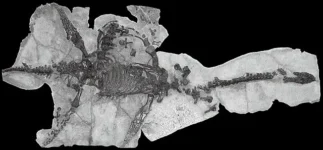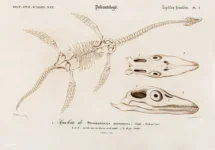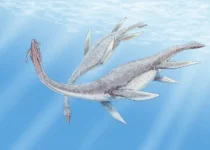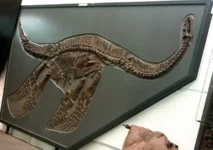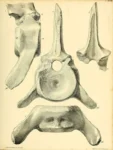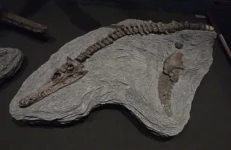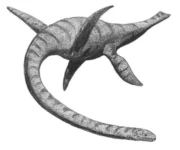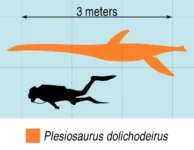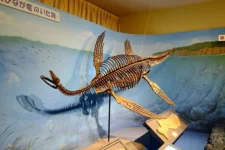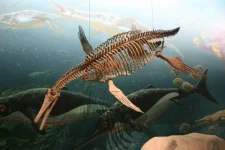Plesiosaurus
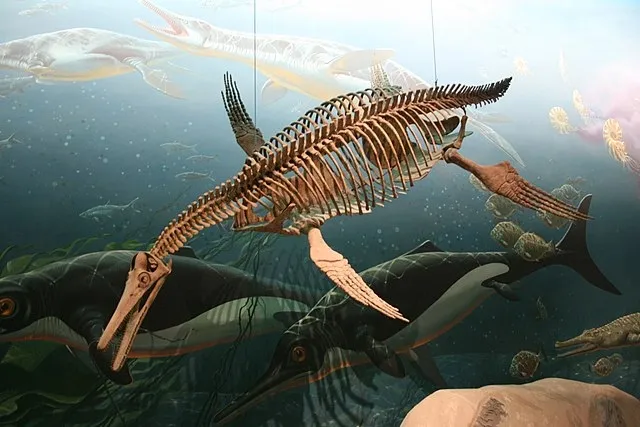
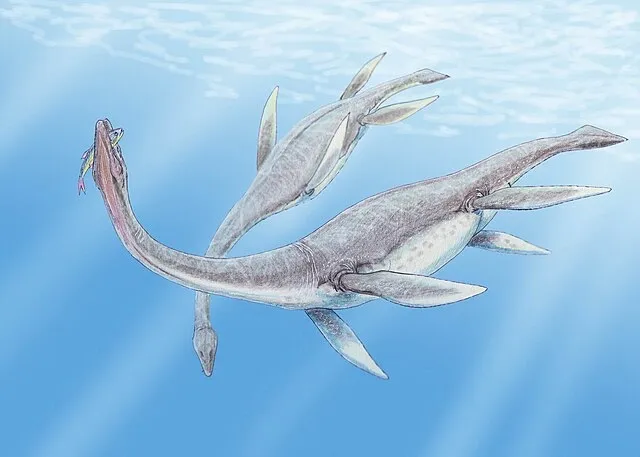
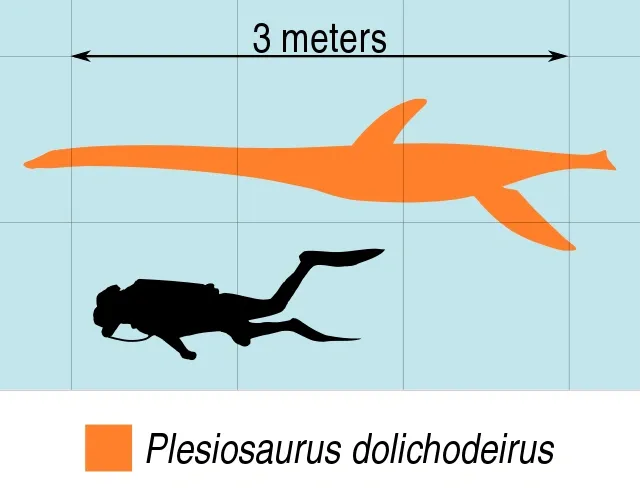
PLESIOSAURUS
Plesiosaurus was a genus of marine reptiles that lived during the early Jurassic period, around 201 to 183 million years ago. It is one of the best-known and earliest discovered plesiosaurs, giving its name to the entire order Plesiosauria. Plesiosaurus is significant as one of the first marine reptiles to be discovered and described scientifically. It provided early evidence of the diversity of prehistoric marine life and contributed to the understanding of the evolution of marine reptiles. Here are some key details about Plesiosaurus:
SIZE AND ANATOMY:
- Size: Plesiosaurus typically grew to about 11 to 15 feet (3.3 to 4.5 meters) in length.
- Weight: It weighed around 1,000 to 1,500 pounds (450 to 680 kilograms).
- Skull and Teeth: Plesiosaurus had a small head with a long, flexible neck. Its jaws were filled with sharp, conical teeth adapted for catching fish and other small marine animals.
- Body and Limbs: It had a broad, flat body with four large, paddle-like flippers that allowed it to “fly” through the water in a manner similar to modern sea turtles.
- Tail: The tail was relatively short and not used for propulsion.
DIET AND FEEDING BEHAVIOR:
- Diet: Plesiosaurus was a carnivore, primarily feeding on fish and cephalopods. Its sharp teeth and long neck allowed it to strike swiftly at prey.
- Locomotion: Plesiosaurus moved through the water by flapping its flippers in a manner similar to the underwater flight of sea turtles and penguins. This method of locomotion gave it great maneuverability.
- Habitat: It lived in the shallow seas that covered much of Europe during the early Jurassic period. Fossils have been found in what is now England and Germany.
FOSSILS AND DISCOVERY:
- First Discovery: The first Plesiosaurus fossils were discovered in the early 19th century by the fossil hunter Mary Anning along the Jurassic Coast of England. It was named by the paleontologist William Conybeare in 1821.
- Significant Finds: Numerous well-preserved specimens have been found, providing extensive information about its anatomy and lifestyle.
CLASSIFICATION
- Order: Plesiosauria
- Family: Plesiosauridae
- Genus: Plesiosaurus
- Species: The most well-known species is Plesiosaurus dolichodeirus.
FUN FACTS:
- Early Discovery: The discovery of Plesiosaurus by Mary Anning, one of the first known female fossil hunters, was a landmark in paleontology. Her work helped lay the foundation for the study of prehistoric life.
- Long Neck: Plesiosaurus had a remarkably long neck, consisting of up to 40 vertebrae. This adaptation allowed it to swiftly strike at prey from a distance while remaining relatively motionless, aiding in ambush hunting.
- Unique Locomotion: The flapping motion of its four large flippers gave Plesiosaurus excellent maneuverability in the water. This method of swimming is different from most other marine reptiles, which relied more on tail propulsion.
- Misconceptions: Plesiosaurus is often mistakenly thought to be the same as other long-necked marine reptiles like Elasmosaurus. However, Plesiosaurus is distinct in its smaller size and different anatomical features.
